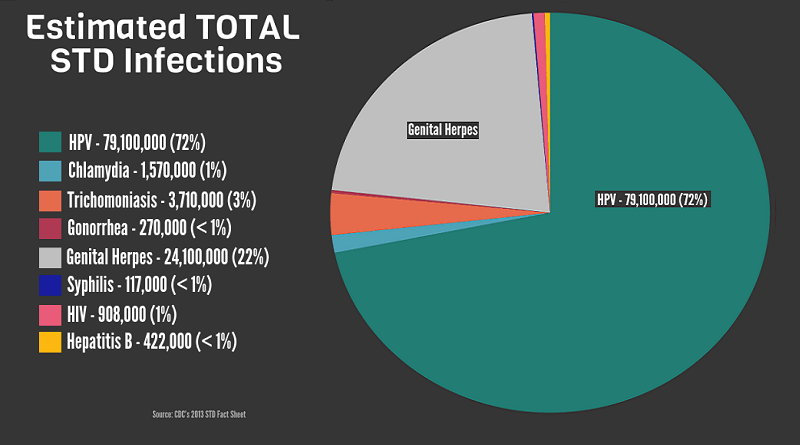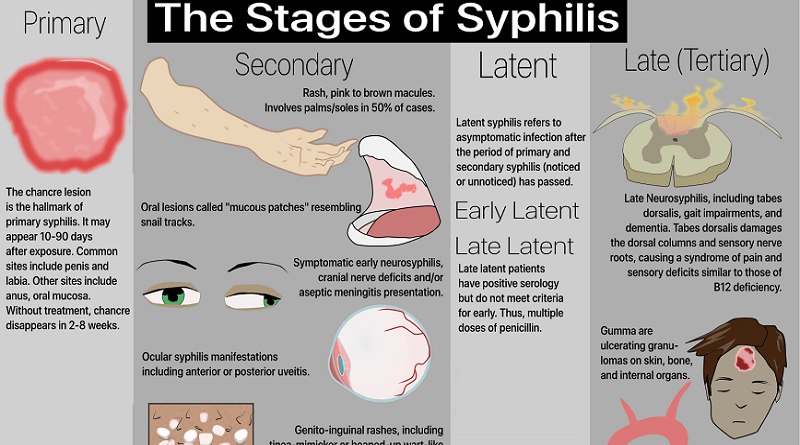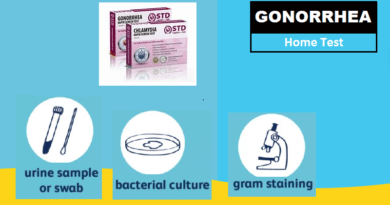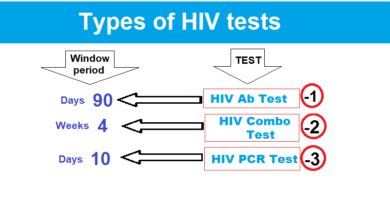1- Sexually transmitted Infections (STIs): Prevalence and types
in this Sexually transmitted Infections (STIs), part 1, I will discuss the prevalence and types of sexually transmitted Infections which are group of infections that spread through sexual contact. Also, they are called Sexually transmitted Diseases (STDs). These infections can have a variable range of symptoms, from mild to serious), and health effects, (from none to fatal). STIs are don’t affect genital organs only but also can affect other parts of the body. They are also caused by different types of microorganisms.
Whatever, it is important for individuals to practice safe sex and get tested for STDs if you were involved in unsafe sex or have any symptoms or concerns. At the public level, it’s Important to raise awareness of sexually transmitted Infections Prevalence, types and other related information.
I. Introduction:
- Definition: Sexually transmitted infections (STIs) are infectious diseases. All types can spread through sex. They are caused by bacteria, viruses, or parasites, affecting both men and women. Infected persons can experience a range of symptoms that depend on the type of infection, but with some common symptoms such as pain, discharge, itching, and sores. Some STIs can go in their own without treatment, but untreated STIs can lead to serious health complications, including infertility and an increased risk of HIV.
- Awareness of Sexually transmitted Infections Prevalence, types, diagnosis and prevention are very important for the following reasons:
- STIs can have serious health consequences if left untreated, such as infertility, pelvic inflammatory disease, and an increased risk of HIV.
- Some STIs, such as chlamydia and gonorrhea, may occur with no visible symptoms and can go undetected for long periods of time.
- Infections can be spread easily during through sexual activity, whether vaginal, anal, or oral sex.
- They can be preventable through the use of condoms and other forms of barrier protection, as well as through regular testing and early treatment.
- To know how to protect yourself from STIs and how to get tested, can lead to healthier sexual relationships.
- The prevention and awareness education can help reduce the spread of STIs and decrease the burden on the healthcare system.
II. Prevalence of Sexually transmitted Infections (STIs)
The prevalence of sexually transmitted infections (STIs) varies depending on some factors, including geographic location, age, and sexual behavior in the community. In general, they are more common in younger people, in people with multiple sexual partners, and in people who used to involve in unprotected sex. According to the Centers for Disease Control and Prevention (CDC), there are approximately 20 million new STI cases each year in USA, with chlamydia and gonorrhea are the most common. Globally, there is more than 1 million new STI infections every day, according to the World Health Organization (WHO).
Prevalence of STIs globally?
The prevalence of sexually transmitted infections (STIs) varies worldwide, globally, WHO estimates that:
- More than 1 million people are infected with STIs every day.
- Chlamydia is the most common STI worldwide, with about 131 million new cases each year.
- Gonorrhea is also common worldwide, with around 78 million new cases yearly.
- Syphilis is estimated at 5.6 million new cases each year.
- Human papillomavirus (HPV) is the most common viral STI, with an estimated 290 million new cases each year.
- HIV is considered a big public health issue, with about 38 million people living with the virus worldwide.
- Age prevalence: The highest rates of STIs are found among young people aged 15-24 years.
- Location prevalence: The highest rates of STIs are found in Sub-Saharan Africa.
Note that these statistics may not reflect the true STIs cases, as many cases go unreported.
| STI Worldwide | Estimated new cases per year |
|---|---|
| Chlamydia | 131 million |
| Gonorrhea | 78 million |
| Syphilis | 5.6 million |
| Human papillomavirus (HPV) | 290 million |
| HIV | 38 million |
III. Sexually transmitted Infections (STIs) Types
There are several types of sexually transmitted diseases (STDs), including:
A- Bacterial STDs:
Chlamydia, gonorrhea, and syphilis are all bacterial sexually transmitted infections (STIs).
- Chlamydia is caused by the bacterium Chlamydia trachomatis and is one of the most common STIs.
It is estimated that around 131 million new cases of chlamydia occur each year worldwide.
Chlamydia is often asymptomatic, meaning that it doesn’t produce any symptoms. However, if left untreated, it can lead to serious health problems such as pelvic inflammatory disease (PID) and infertility in women. - Gonorrhea is a common STD caused by the bacterium Neisseria gonorrhoeae. It is estimated that around 78 million new cases of gonorrhea occur each year worldwide. Like chlamydia, it can also be asymptomatic, but if left untreated, it can lead to serious health problems such as PID and infertility in women. Additionally, it can also cause a serious complication called disseminated gonococcal infection (DGI), which can affect the joints, skin, and heart.
- Syphilis is caused by the bacterium Treponema pallidum. It is estimated that around 6.3 million new cases of syphilis occur each year worldwide. It has three stages, each with different symptoms. In its early stages, it can be asymptomatic. If left untreated, it can lead to serious health problems such as brain damage, heart disease, and death.
All of these bacterial STIs can be easily treated with antibiotics such as Azithromycin, Doxycycline, Cefixime, or Penicillin.
| Bacterial STD | Causative Bacterium | New Cases per Year Worldwide | Symptoms | If untreated | Treatment |
|---|---|---|---|---|---|
| Chlamydia | Chlamydia trachomatis | 131 million | Asymptomatic or mild symptoms | PID and infertility in women | Antibiotics (Azithromycin, Doxycycline, Cefixime) |
| Gonorrhea | Neisseria gonorrhoeae | 78 million | Asymptomatic or mild symptoms | PID, infertility, DGI | Antibiotics (Azithromycin, Doxycycline, Cefixime) |
| Syphilis | Treponema pallidum | 6.3 million | Three stages with varying symptoms | Brain damage, heart disease, and death | Antibiotics (Penicillin) |
B- Viral STDs:
Viral sexually transmitted infections (STIs) are caused by viruses and can include:
- Herpes: caused by the herpes simplex virus (HSV). It is estimated that around 3.7 billion people under the age of 50 (67%) have herpes simplex virus type 1 (HSV-1) and around 417 million people aged 15-49 years have herpes simplex virus type 2 (HSV-2).
It is characterized by painful, fluid-filled blisters that can appear on the genitals, anus, or mouth. - HPV (human papillomavirus): a common STI that can cause genital warts and cervical cancer. It is estimated that around 14 million new cases of HPV occur each year globally. HPV can be spread through skin-to-skin contact, and there are many different types of HPV.
- HIV (human immunodeficiency virus): a virus that attacks the immune system and, when the immune system deteriorates, can lead to AIDS. As of 2020 records, it is estimated that 38 million people worldwide were living with HIV. HIV can be spread mainly through unprotected (vaginal, anal, or oral sex), and sharing needles. Also, it can spread from an infected mother to her baby during childbirth or breastfeeding. But, rarely spread through blood transfusion or organ transplant.
- Hepatitis B: a viral infection that affects the liver.
As of 2020, it is estimated that around 257 million people worldwide were living with chronic hepatitis B infection.
It can be spread through unprotected sex, sharing needles, or from an infected mother to her baby during childbirth. - Hepatitis C: a viral infection that also affects the liver.
As of 2020, it is estimated that around 71 million people worldwide were living with chronic hepatitis C infection.
It can be spread through sharing needles.
According to the World Health Organization (WHO), the estimated new HIV cases is around 1.7 million, Hepatitis B around 800,000 and Hepatitis C around 1.3 million new cases. Notice that the new cases of hepatis C is more than those of Hepatitis B, but individuals living with C are less than those e living with B. Why? Hepatitis C is now curable by medications; therefore, some infected case can be cured.
| STI | Causative Agent | Estimated new cases per year | Symptoms | Consequences if untreated |
|---|---|---|---|---|
| Herpes (HSV-1) | Herpes simplex virus type 1 | 3.7 billion | painful, fluid-filled blisters | can recur periodically. |
| Herpes (HSV-2) | Herpes simplex virus type 2 | 417 million | painful, fluid-filled blisters | can recur periodically. |
| HPV | Human papillomavirus | 14 million | genital warts, cervical cancer | cervical cancer |
| HIV | Human immunodeficiency virus | 38 million | asymptomatic at early stage | AIDS |
| Hepatitis B | Hepatitis B virus | 257 million | asymptomatic at early stage | liver damage and cancer |
| Hepatitis C | Hepatitis C virus | 71 million | asymptomatic at early stage | liver damage and cancer |
Viral STDs
C- Parasitic STDs:
There are several parasitic sexually transmitted infections (STIs) that can be transmitted through sexual contact. Here are a few examples:
- Trichomoniasis: This STI is caused by a protozoan parasite called Trichomonas vaginalis. It is estimated that around 270 million new cases occur each year worldwide. Symptoms can include vaginal discharge, itching, and painful urination. If left untreated, it can lead to serious complications such as pelvic inflammatory disease (PID) and increase the risk of HIV transmission.
- Pubic lice (Crabs): Pubic lice are tiny parasitic insects that can infest the pubic hair. They can be transmitted through sexual contact and can cause itching, redness, and small bites on the skin. Pubic lice can be treated with over-the-counter medications or prescribed medications by a doctor.
- Scabies: Scabies is caused by a tiny mite called Sarcoptes scabiei. It is transmitted through skin-to-skin contact, including sexual contact. Symptoms include intense itching, especially at night, and a rash with small, raised, red bumps. Scabies can be treated with prescription medications.
- Giardiasis: This infection is caused by the parasite Giardia lamblia. It can be transmitted through oral-anal contact and can cause diarrhea, abdominal cramps, and other gastrointestinal symptoms. It can be treated with medications.
| STI | Causative Agent | Estimated new cases per year | Symptoms | Consequences if untreated |
|---|---|---|---|---|
| Trichomoniasis | Trichomonas vaginalis | 270 million | vaginal discharge, itching, painful urination | PID, Increased risk of HIV transmission |
| Pubic lice (Crabs) | Pthirus pubis | not available | itching, redness, bites on skin | none |
| Scabies | Sarcoptes scabiei | not available | itching, rash with red bumps | none |
| Giardiasis | Giardia lamblia | not available | diarrhea, abdominal cramps, gastrointestinal symptoms | none |
D- Fungal STDs:
Fungi Types that cause Sexually transmitted Infections include:
- Candidiasis (Yeast Infection): This STI is caused by the fungus Candida albicans. It is common in women and can affect the vagina, vulva, or mouth. Symptoms can include itching, burning, and thick, white discharge. Yeast infections can be treated with over the counter or prescription antifungal medications.
- Jock itch: This is a fungal infection that affects the groin area, it is also known as Tinea cruris, it’s caused by a fungus called Trichophyton rubrum, it typically affects men, but can also affect women. Symptoms include itching, redness, and a rash in the groin area. Jock itch can be treated with over-the-counter antifungal creams or sprays.
- Athlete’s foot (Tinea pedis): This is a fungal infection that affects the skin of the feet. It’s caused by a fungus called Trichophyton rubrum. Symptoms include itching, burning, and redness on the skin between the toes. Athlete’s foot can be treated with over-the-counter antifungal creams or sprays.
- Ringworm (Tinea corporis): This is a fungal infection that can affect the skin anywhere on the body. It’s caused by a fungus called Trichophyton rubrum. Symptoms include a ring-shaped rash, itching, and redness. Ringworm can be treated with over-the-counter antifungal creams or sprays.
| STI | Causative Agent | Symptoms | Treatment |
|---|---|---|---|
| Candidiasis (Yeast Infection) | Candida albicans | itching, burning, thick, white discharge | Over-the-counter or prescription antifungal medications |
| Jock itch | Trichophyton rubrum | itching, redness, rash in the groin area | Over-the-counter antifungal creams or sprays |
| Athlete’s foot | Trichophyton rubrum | itching, burning, redness on the skin between the toes | Over-the-counter antifungal creams or sprays |
| Ringworm (Tinea corporis) | Trichophyton rubrum | ring-shaped rash, itching, redness | Over-the-counter antifungal creams or sprays |
E- Protozoal STDs:
- Trichomoniasis.
- Giardiasis:
- Amoebiasis: This infection is caused by the parasite Entamoeba histolytica. It can be transmitted through oral-anal contact and can cause diarrhea, abdominal cramps, and other gastrointestinal symptoms. It can be treated with medications.
- Chagas disease: This is a tropical disease caused by the parasite Trypanosoma cruzi, it can be transmitted through the fecal-oral route, the bug that transmit the disease is known as ‘kissing bug’ and it can also be transmitted through blood transfusion or organ transplants. Symptoms can include fever, swollen glands, and a rash. Chagas disease can be treated with medications, but it can also cause chronic health problems if left untreated.
| Infection | Causative Agent | Transmission | Symptoms | Treatment |
|---|---|---|---|---|
| Amoebiasis | Entamoeba histolytica | oral-anal contact | diarrhea, abdominal cramps, gastrointestinal symptoms | Medications |
| Chagas disease | Trypanosoma cruzi | fecal-oral route, blood transfusion, organ transplants | fever, swollen glands, rash | Medications, chronic health problems if left untreated |
Most common types of STIs
Some of the most common types of sexually transmitted diseases (STDs) include:
| Common STI Name | Causative Agent |
|---|---|
| Chlamydia | Bacterial |
| Gonorrhea | Bacterial |
| Syphilis | Bacterial |
| Herpes (HSV-2) | Viral |
| HPV | Viral |
| HIV/AIDS | Viral |
| Trichomoniasis | Protozoal |

SUMMARY
Sexually transmitted infections (STIs) are caused by bacteria, viruses, or parasites and are spread through sexual contact. They can have serious health consequences if left untreated, including infertility and an increased risk of HIV. Over 1 million people are infected with STIs every day, with the highest rates among young people and in Sub-Saharan Africa. Chlamydia, gonorrhea, and syphilis are common globally, while HPV and HIV are significant public health issues. It’s important to practice safe sex and get tested regularly to prevent the spread of STIs.
SOURCES
- https://www.cdc.gov/std/
- https://www.who.int/health-topics/sexually-transmitted-infections/#tab=tab_1
- https://www.hhs.gov/std/
- https://www.who.int/gho/sexual_and_reproductive_health/STIs/en/
- https://www.niaid.nih.gov/diseases-conditions/sexually-transmitted-diseases-stds
Discover more from Helal Medical Manila
Subscribe to get the latest posts sent to your email.




